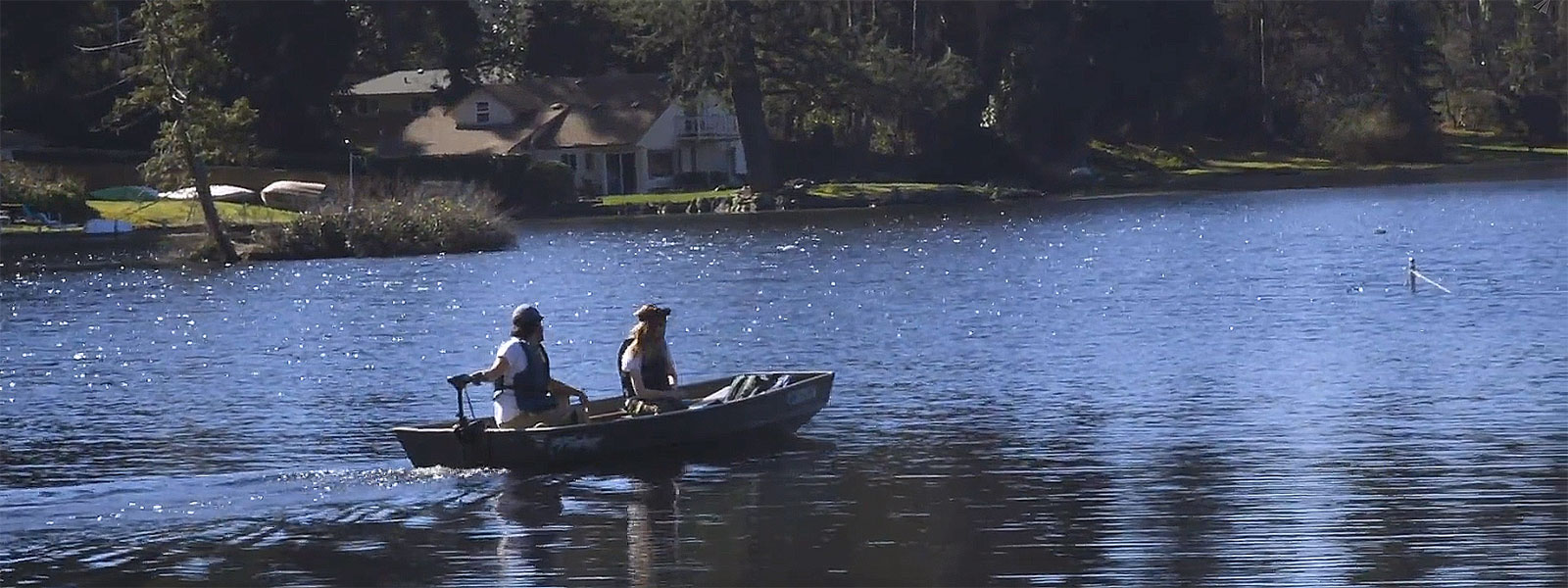
Diving for Data: Solving the Arsenic Riddle
Divers from EPA Scientific Diving recently helped a team from UW Tacoma with another piece of the Lake Killarney arsenic puzzle.
A four-year long project to understand the environmental consequences of arsenic contamination in South and Central Puget Sound's small freshwater lakes took another step forward recently.
In March 2019, divers from the U.S. Environmental Protection Agency's Scientific Diving program helped UW Tacoma student, alumni and faculty researchers place metering devices and collect samples. The video above shows them at their work.
Arsenic was carried to the lake, and many other lakes throughout the region, through the air from the tall smokestack at the ASARCO copper smelter. The smelter operated on the shores of Commencement Bay in Ruston, Wash., from 1888-1985. The research aims to explain what is happening to the arsenic in these lakes: how it moves through the aquatic environment, whether it enters the food web, and whether it poses a toxic threat to humans.
Associate Professor Jim Gawel co-directs the arsenic research along with Dr. Rebecca Neumann, associate professor of civil and environmental engineering at UW in Seattle. The team includes UW Tacoma alumi Erin Hull, '16, and Marco Barajas, '18, current student Ken Burkart, and Dr. Alex Horner-Devine and Samantha Fung, professor and graduate student of civil and environmental engineering at UW in Seattle, respectively. The research is funded by the National Institute of Environmental Health Sciences Superfund Basic Research Program.



